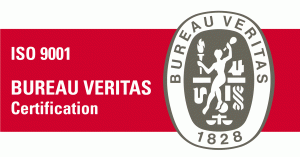It has been known, women have a specific symptoms of menopause when they reach certain age. The women population is increasing in the world. It also going hand in hand with the growth of breast and cervix cancer prevalence, thus, development of alternative functional food to help delaying the on-set and reduce menopause symptoms is needed. It is believed that soy isoflavones and their glucosides are associated with health protective properties including cancer prevention, plasma cholesterol lowering effects, phytoestrogen activities, and reduction of postmenopausal bone loss. The condition leads to the development of functional food containing isoflavones, in this case is milk products.
There is a discrepancy in how the Indonesian government handles food and nutrition issues, in particular functional foods, on international and national levels. On one hand, Indonesia is the fourth place of the highest population in the world and also the number of women population is higher than that of men as well as the increasing number of women population. This increasing number of population is in line with the increasing number of health problem specifically related to women’s health. On the other hand, its domestic food and nutrition program and health policies demonstrate a weak legal response in regards to women-health’s problem in general. National program, in other to support alternative maintaining women’s health or preventing women health’s problem such as functional foods which is believed maintaining wellbeing and certain specific syndrome, is relatively low. Food processing industries are needed the new breakthrough, a new idea of development functional foods. Those industries can be stimulated to produce functional foods based on local commodity. This need supports in form of research innovation to develop new functional foods or improve food processing technology that can be adopted by food industries
Milk products are one of important food products in Indonesia. Therefore, research on the incorporation of isoflavones into milk products will, not only helping produce functional food, but also in later application, adding the value of soy which is abundant in Indonesia and Malaysia. Moreover, there has been growing trend for fortification of dairy beverages with non-dairy bioactive. In addition, trend in the functional food market indicates that milk-based beverages are ideal vehicles for newly discovered bioactive food ingredients (Sharma 2005).
Dalam sebuah studi meta-analisis yang dipublikasikan dalam American Journal of Clinical Nutrition tahun 2013, Gould et al menganalisis 11 studi suplementasi omega 3 pada ibu hamil dan melihat pengaruhnya terhadap perkembangan anak yang dikandung pada masa kanak-kanak. Dalam laporannya, Gould menyimpulkan bahwa belum terdapat bukti yang cukup kuat mengenai manfaat suplementasi omega 3 pada ibu hamil untuk meningkatkan kecerdasan anak. Baru-baru ini, analisis serupa dilakukan oleh Saccone et al dengan melibatkan 34 uji klinik. Hasil analisis ini kemudian dipublikasikan dalam The journal of maternal-fetal and neonatal medicine tahun 2016. Senada dengan studi Gould et al, Saccone et al tidak menemukan bukti kuat yang mendukung manfaat suplementasi omega 3 selama hamil untuk meningkatkan kecerdasan anak. Namun demikian, baru-baru ini sebuah studi kohort yang mengikutsertakan ribuan pasang ibu-anak melaporkan adanya hubungan signifikan antara konsumsi suplemen minyak ikan sebelum dan selama hamil dengan perkembangan anak yang diukur pada usia bayi sampai 3 tahun (Vollet K et al, Journal of developmental origin of health and diseases, 2017). The author highlighted several bioactive ingredients having available opportunities and challenges for development for functional dairy beverages. It included isoflavones as one of the functional ingredients that could be added milk products. However, Sharma (2005) mentioned that the potential formula challenges are bitterness, beany taste and poor solubility in water.
UHT milk processing, like other food processing, converts the raw milk material into food product. Obviously, thermal application in this process causes changes in to composition and products attributes as demanded in the specification (Earle & Earle, 2003). In regard to fulfill consumers’ expectation, functional ingredient is added in order to improve physiological benefits of UHT milk product. However, the additional material has to heat-stable with high temperature very short time process.
Other possible milk processing is pasteurization and high pressure processing. High temperature short time pasteurization employed the temperature of 72oC for 15 seconds as well as high pressure processing are mild heat treatment that can help maintain the activities of the bioactive compounds added into the milk system. In this case, soy isoflavone extract is one of these potential functional ingredients or bioactive compounds which can be enriched into the milk.
Previous study has shown that polyphenols-rich extracts of tea (green and black), cocoa powder, coffee, red wine, coconut shell and oak leaves and barks increase the heat stability of skim milk and concentrated milk and increase the rennet coagulation time of milk (O’Connell et al. 1998; O’Connell & Fox 1999). O’Connell and Fox (1999) investigated the effect of pure phenolic compounds on the heat stability of milk. The result revealed that most of the phenolic compounds increased the stability of milk. In contrast, with regards to phenolic compounds, Khurana (1992) mentioned that the degradation of phenolic compounds (anthocyanins, flavones, caretonoids, curcumins, mangiferin and gingerolsis) during thermal processing is substantial. Prabhakaran and Perera (2006) stated that during soymilk manufacture there was no significant difference in the loss of isoflavones subjected to indirect versus direct heating UHT treatment. However, the isoflavones analysis method in the study was insensitive to soy isoflavones conjugates. Due to the limited information in relation to the measurement the incorporation of isoflavones as well as the measurement of isoflavones retained activities that applied into the milk system under several conditions of milk processing such as UHT treatment, pasteurization, and high pressure processing.
In conclusion, the stability of isoflavones in milk systems is an important aspect when incorporating these compounds into milk products. To impart the functional benefits, isoflavones must be stable during the processing of milk product, e.g. at high temperature for short time (UHT), pasteurization or high pressure processing. Previous research had shown that polyphenols-rich extracts and pure phenolics compounds increase the heat stability of milk and the rennet coagulation time of milk (O’Connell et al. 1998; O’Connell & Fox 1999a). In contrast, other research (Khurana, 1992) showed that the degradation of phenolic compounds during thermal processing is substantial. However, during soymilk manufacturing, there was no significant different in the loss of isoflavones subjected to indirect and direct heating UHT treatment (Prabhakaran and Perera 2006).
This suggests that isoflavones may be suitable for milk enrichment. However, the major challenge facing the enrichment of isoflavones in milk products is the limited solubility of isoflavones in aqueous medium. Due to this, the enrichment of soy isoflavones in milk products has not been done despite the significant health benefits delivered by these compounds.
References :
[References are listed on PDF version]



